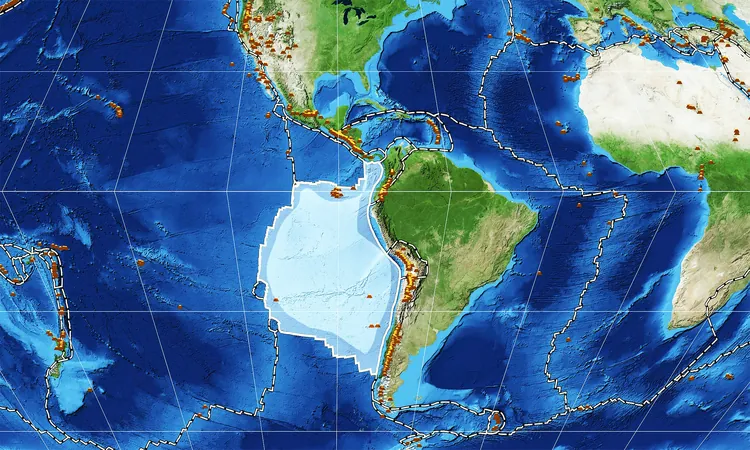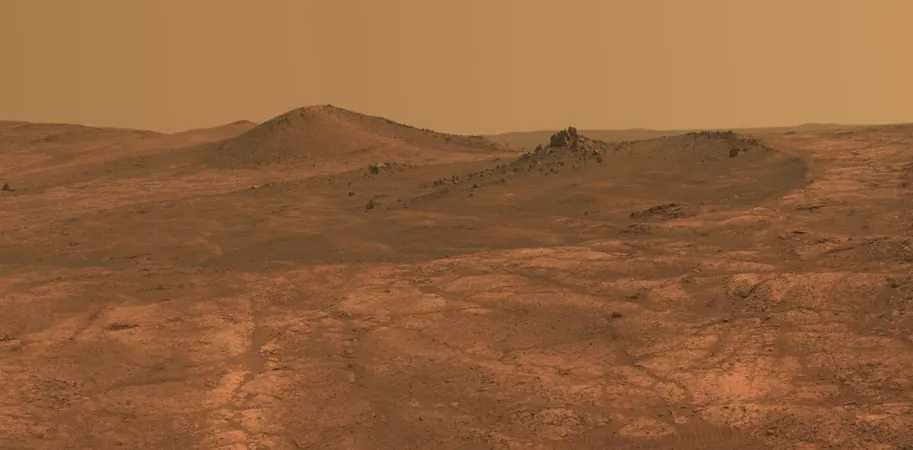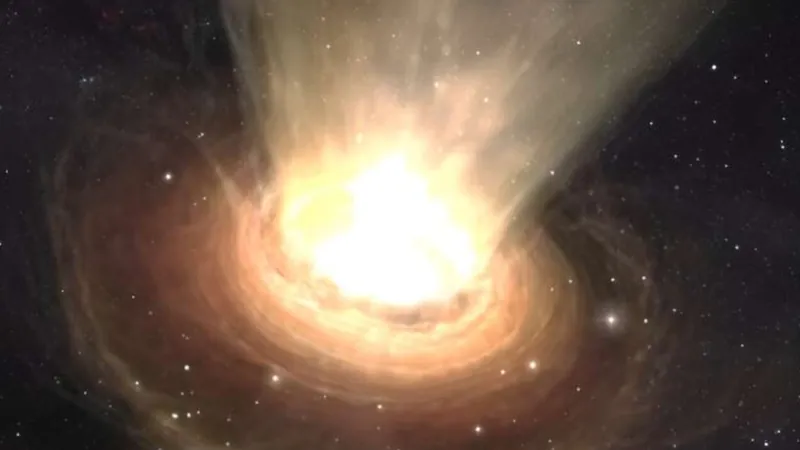
Incredible Discovery of Ancient Seafloor Megastructure Challenging Earth's Geological History
2024-10-02
Author: Daniel
Incredible Discovery of Ancient Seafloor Megastructure Challenging Earth's Geological History
A groundbreaking discovery has emerged from the depths of our planet as scientists reveal an ancient seafloor structure buried deep beneath the Earth’s surface. This find not only captivates the imagination but also prompts a radical rethinking of how we understand our planet’s geological evolution and the dynamics of tectonic movements.
Diving into Earth's Mantle
Using cutting-edge seismic imaging technologies, Wang and his team ventured between 255 and 410 miles below the Earth's surface, reaching a region known as the mantle transition zone. This critical area is pivotal to our planet's geodynamic behavior, influencing volcanic activities, tectonic movements, and seismic events across the globe.
Despite its importance, the mantle transition zone has long been a mystery, and the recent discovery reveals a previously uncharted scenario in Earth’s historical narrative. The team aimed to unlock secrets that could substantially alter our comprehension of what lies beneath.
Ancient Remnants of the East Pacific Rise
The researchers focused on the East Pacific Rise, where tectonic plates diverge. Known for its volcanic activity, this mid-ocean ridge has been a subject of geological interest for years. Surprisingly, the team unearthed evidence of an ancient seafloor that had plunged into the mantle around 250 million years ago.
Wang articulated the significance of their findings: “What we’ve discovered is akin to a fossilized fingerprint. This thickened area in the mantle reveal fragments of an ancient oceanic plate, giving us unparalleled insight into the historical movements of our planet.”
This ancient seafloor presents a rare glimpse into a bygone era while dinosaurs roamed the land, serving as a tangible connection to an Earth that existed long before modern humans walked its surface.
Reimagining Plate Tectonics
The discovery is shaking the foundations of our understanding of plate tectonics, challenging established concepts about tectonic movement. Traditionally, subduction—the process where one tectonic plate slides beneath another—has been viewed as essential for recycling geological materials and influencing surface activity, including volcanism.
However, findings suggest that some ancient seafloor materials have become “stuck” within the mantle, prompting new inquiries regarding tectonic dynamics. Wang noted, "The material in the mantle transition zone was sinking at half the expected rate. This opens new avenues to explore how these deep Earth processes affect what we experience on the surface."
The implications are monumental, potentially altering our understanding of seismic activity, volcanic eruptions, and continental shifts over millions of years.
Impact on Earth’s Carbon Cycle
The findings bear significant implications for Earth’s carbon cycle—a fundamental aspect of our planet’s climate system. As subducting ocean slabs carry carbon-rich materials deep into the mantle, their dynamics can drastically influence the carbon storage and release processes, playing a crucial role in volcanic activities and potentially in climate variations over geological timescales.
The revelations that some of these slabs are stuck raises concerns about how they may disrupt traditional models of the carbon cycle, essential for our understanding of climate change and geological processes.
Charting a Future of Discovery
What lies ahead for Wang and his team? Their ambitions include expanding research across the Pacific and beyond to map the contours of these ancient subduction zones. By accruing more seismic data, they aspire to create a comprehensive global map of these hidden structures, enhancing our grasp of how tectonic forces shape both the surface of the Earth and its interior.
“Many more ancient features could exist beneath our feet. Uncovering them could reveal new insights not just about Earth's past, but also about other celestial bodies, like Mars and Venus,” asserted Wang, hinting at exciting prospects in planetary science.
The study of this ancient seafloor megastructure has been documented in the journal *Science Advances*, marking a pivotal moment in geological research.
Stay tuned as we delve deeper into this fascinating field, as there are more revelations waiting to surface that could transform our understanding of the planet’s intricate past!




 Brasil (PT)
Brasil (PT)
 Canada (EN)
Canada (EN)
 Chile (ES)
Chile (ES)
 España (ES)
España (ES)
 France (FR)
France (FR)
 Hong Kong (EN)
Hong Kong (EN)
 Italia (IT)
Italia (IT)
 日本 (JA)
日本 (JA)
 Magyarország (HU)
Magyarország (HU)
 Norge (NO)
Norge (NO)
 Polska (PL)
Polska (PL)
 Schweiz (DE)
Schweiz (DE)
 Singapore (EN)
Singapore (EN)
 Sverige (SV)
Sverige (SV)
 Suomi (FI)
Suomi (FI)
 Türkiye (TR)
Türkiye (TR)